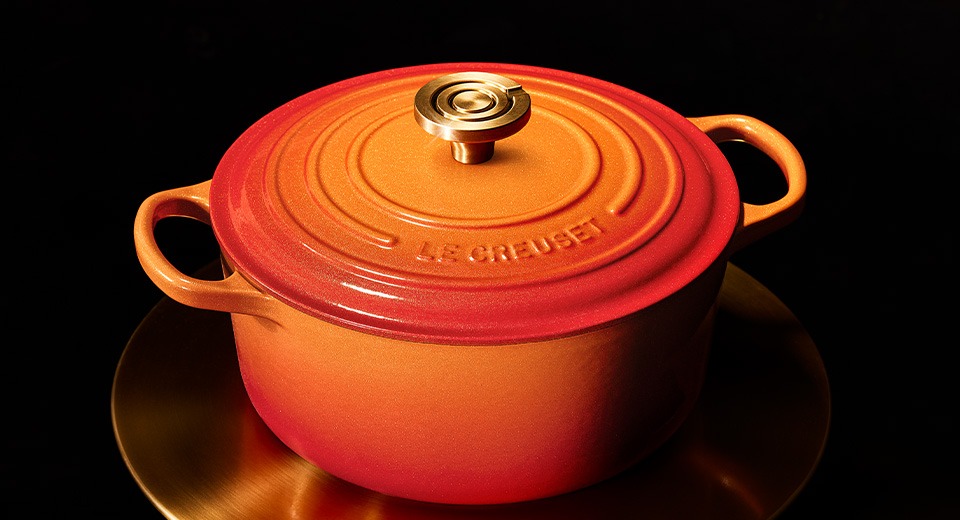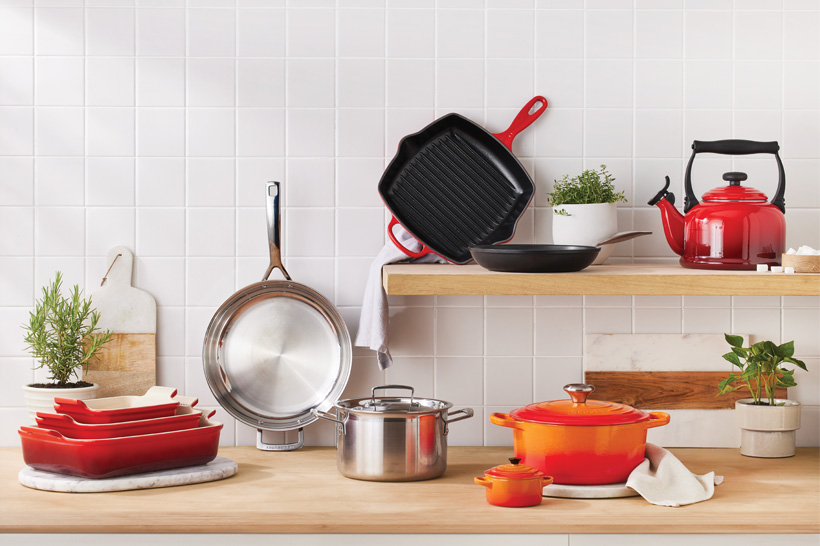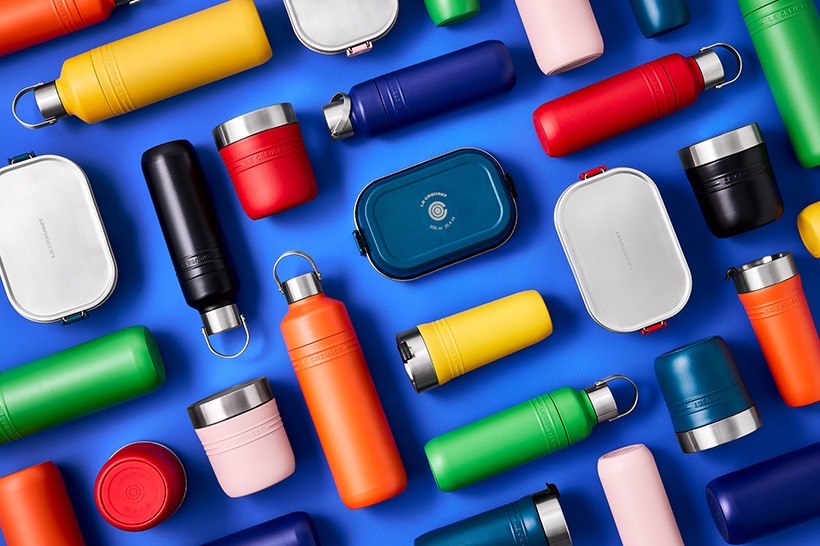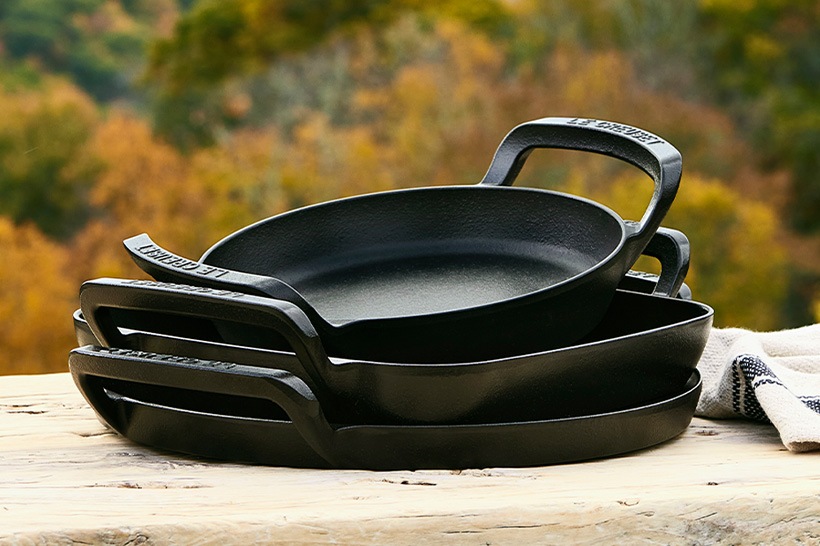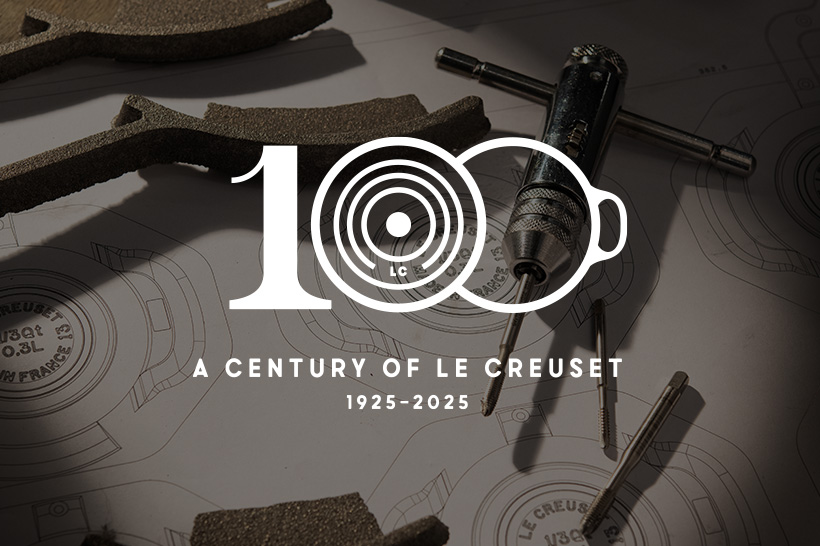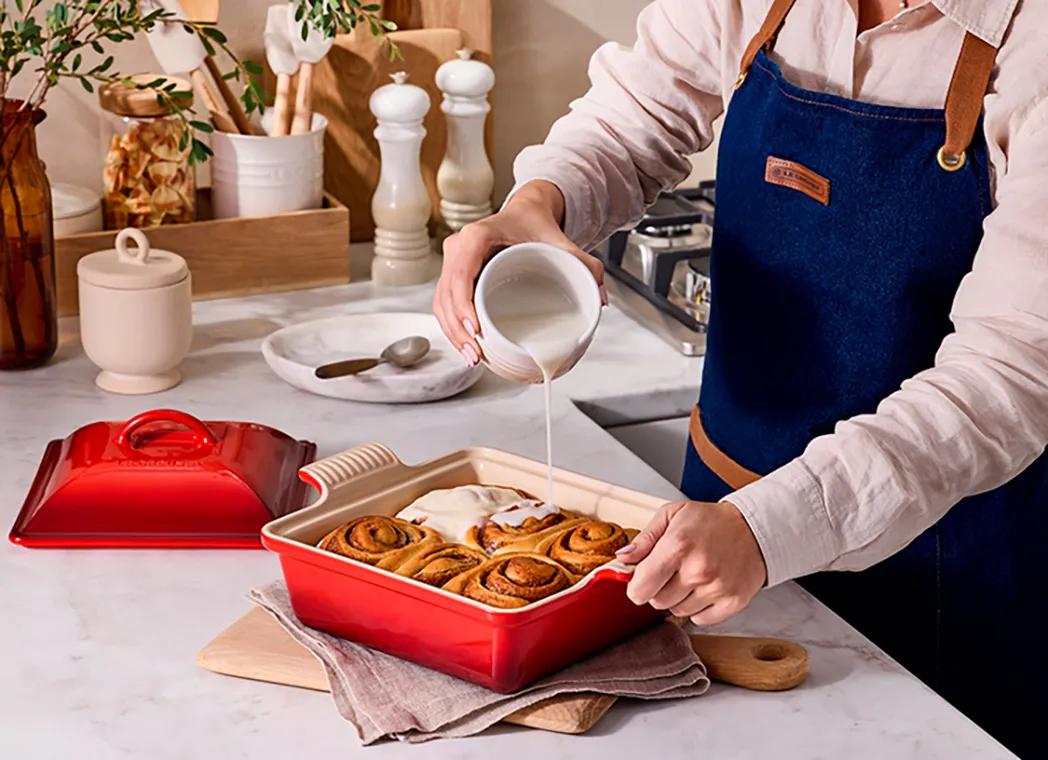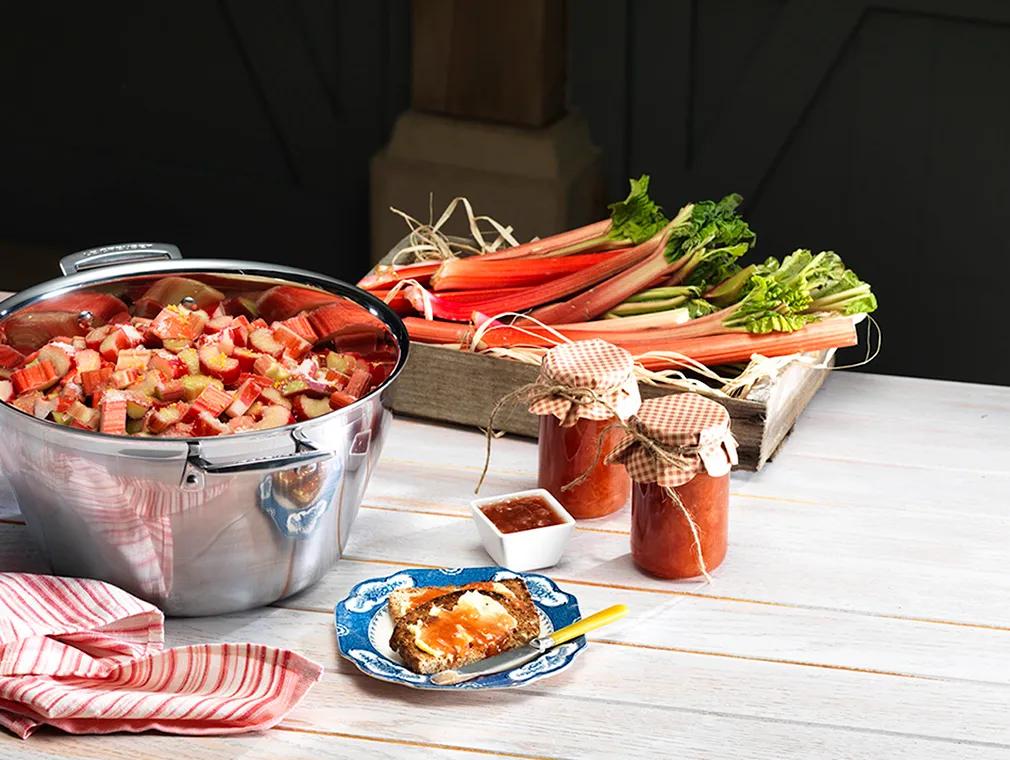
Main INGREDIENTS
- Fruit
Ingredients
Method
Ingredients
- 2kg (4½ lb) Rhubarb
- 2 lemons, zest & juice
- 1 tablespoon vanilla extract
- 100g (3½ oz) elderflower heads and a square of muslin
- Or 4 tablespoons elderflower concentrate
- 2kg (4½ lb) jam sugar containing pectin
- Or 2kg (4½ lb) preserving sugar and 2 sachets of powdered pectin
- 8 x 450g (1 lb) jams jars with screw-cap lids or preserving jars
-
Method
-
1To sterilize the jars
-
2Wash the jars and lids with warm soapy water and rinse (see Cook’s Notes).
-
3Turn on the oven at 140°C/275°F/Gas Mark 1. Fan Oven 120 °C.
-
4Place the jars and lids upside down onto the oven racks and leave until required.
-
5To make the conserve
-
6Wipe clean the rhubarb, chop into small pieces and place into a large non-metallic container.
-
7Tie the elderflower heads securely into the muslin square to make a small bag.
-
8Zest and juice the lemons into a small bowl, discarding the pips.
-
9Add the elderflower bag or concentrate, lemon zest, juice, vanilla extract and the sugar with pectin to the rhubarb and stir. Cover with cling film and put in a cool place overnight.
-
10Transfer the soaked fruit and contents to the 3-ply Stainless Steel Preserving Pan and bring to the boil over a low to medium heat, stirring until the sugar has dissolved.
-
11Maintain a slow, rolling boil for 40-50 minutes. Stir occasionally at the start but more frequently towards the end of cooking (see Cook’s Notes).
-
12Test for a set (see Cook’s Notes). If the conserve is not ready return to the heat and boil for 5 minutes more and test again.
-
13Cook's Notes
-
14Sterilizing the jars. If using jars of various shapes and sizes, add a few extra to be prepared. To sterilize a jar quickly wash and leave very wet, microwave on full power for 1 minute. Always use a long-handled spoon or spatula when stirring. Take care towards the end of the cooking process when the conserve becomes thick and may bubble up.
-
15Methods to test the set
-
16Temperature Test - To test the set, stir the conserve well to distribute the heat and place the base of the sugar thermometer into the conserve. A good set will be achieved at 105°C/220°F. Sugar thermometers are relatively inexpensive and can be found in most good department stores and cookshops.
-
17Plate Test - Place a saucer or small plate into the refrigerator before starting to make the conserve. Once it is ready to test drop a small amount of conserve on to the cooled dish and wait for a minute or so. Run a finger across the top of the sample; if the surface wrinkles it should be done. Remove the preserving pan from the heat whilst awaiting the result to prevent over boiling.
-
18Flake Test - Stir the conserve with a large spoon, lift the spoon out of the conserve and turn a couple of times to cool a little. The conserve should form a droplet from the spoon and partly set on the spoon; some will fall forming what are known as “flakes”.
-
19Most cooks prefer to use more than one test as acidity; sugar and pectin levels can all affect the set.






